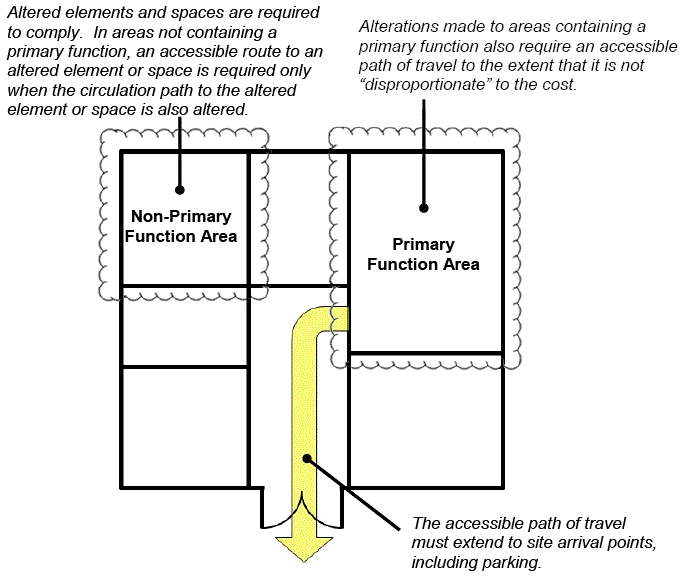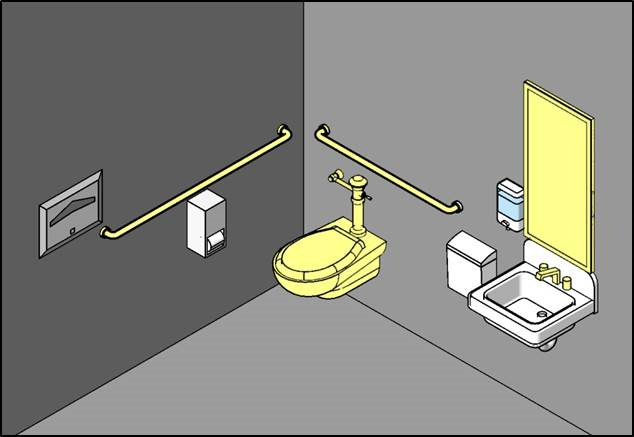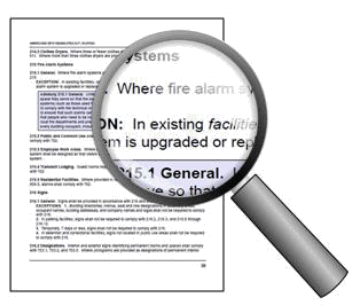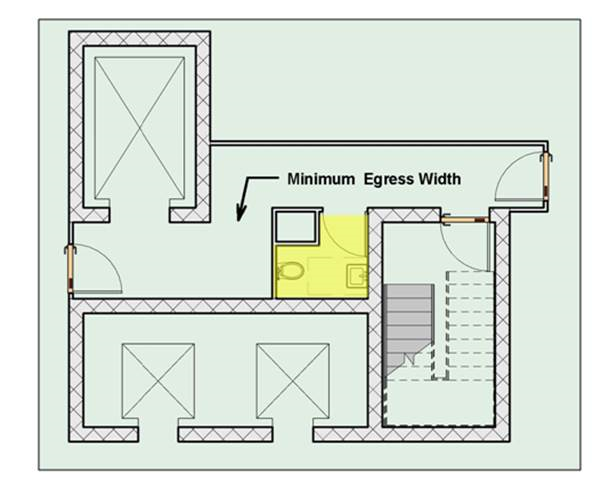Alterations [§202.3]
Alterations are defined in the standards (§106.5) as “a change in a building or facility that affects or could affect the usability of a building or facility or portion thereof.” Many types of projects are covered as “alterations,” including remodeling, renovation, rehabilitation, reconstruction, restoration, resurfacing of circulation paths or vehicular ways, and changes or rearrangement of structural parts, elements, or walls. Normal maintenance, reroofing, painting or wallpapering, or changes to mechanical and electrical systems are not considered alterations unless they affect a facility’s usability. For example, a project limited to an HVAC system that includes the addition of thermostats would affect a facility’s usability because it involves elements (operable parts) covered by the standards.
The standards ensure that the opportunities for accessibility presented by an alteration are taken. How and to what extent the standards apply is determined by the scope of a project and the elements and spaces altered. Only those elements or spaces altered are required to comply, but alterations made to areas containing a primary function (a major activity for which a facility is intended) also require an accessible path of travel.
Application of the Standards in Alterations
If alterations are limited only to elements in a room or space, then the standards apply only to the elements altered. Similarly, where spaces are altered, the standards apply to those spaces that are altered. If a room or space is completely altered (or built new as part of an alteration), the entire room or space is fully subject to the standards. Compliance is required to the extent that it is technically feasible.
Example: Toilet Room Alterations
In a restroom project involving alterations to the toilet, grab bars, faucet controls, and mirror, the standards apply to these elements but not to those that remain unaltered. In more extensive projects where additional elements are altered, application of the standards is greater, commensurate with the scope of work.

Recommendation: While only those elements altered are required to comply, it is advisable to maximize opportunities for accessibility in alterations. Alteration of multiple elements in a room or space may provide a cost-effective opportunity to make the entire room or space fully accessible.
The standards do not require alterations to exceed the level of access required in new construction. For example, spaces that are exempt in new construction are also exempt in alterations.
Prohibited Reduction in Access
New construction requirements also set the baseline for any alteration that would effectively reduce existing accessibility. Alterations that reduce accessibility below the level that would be required in new construction are prohibited. Reductions in access are allowed only where, and to the extent that, the minimum level required in new construction is exceeded. For example, if an alteration will reduce the number of parking spaces on a site, accessible parking spaces can be proportionately reduced as long as the minimum required in new construction (based on the parking facility’s new total) is met. Elements that are not required by the standards to be provided for accessibility, such as phones, can be completely removed from a site.
Special Provisions for Alterations
The standards apply the same requirements used in new construction to alterations but also include provisions unique to alterations. Some provisions clarify application, while others are structured as exceptions that limit coverage or relax technical criteria under certain conditions. Located throughout the standards at the relevant scoping or technical requirement, these provisions and exceptions are distinguished by references to “alterations” or “existing facilities.”
Vertical Access
An accessible route to stories and mezzanines is required in alterations (or additions) where stairs or escalators are added where none existed previously and major structural modifications are necessary (§206.2.3.1) (or as needed to provide an accessible path of travel to an altered primary function area if not disproportionate to the cost (§202.4)), unless the building is exempt from the requirement for access between stories.
Elevators
If elevators are altered, all cars programmed to respond to the same call control must be similarly modified (§206.6.1).
Fire Alarms
Compliant fire alarm systems are required only in alterations where fire alarm systems are installed new, replaced, or upgraded (§215.1, Ex. 1).
Ramps
Slightly steeper running slopes are permitted for short ramps (maximum 6” rise) where space is limited (§405.2, Ex.).
Stairs
Full handrail extensions at stairs are not required where they would project hazardously into circulation paths (§505.10, Ex. 3).
Technical Infeasibility
Compliance in an alteration is not required where it is “technically infeasible.” The term is defined as “something that has little likelihood of being accomplished because existing structural conditions would require removing or altering a load-bearing member that is an essential part of the structural frame; or because other existing physical or site constraints prohibit modification or addition of elements, spaces, or features that are in full and strict compliance with the minimum requirements.”
Where technical infeasibility is encountered, compliance is still required to the maximum extent technically feasible.
Example of Technical Infeasibility
It may be technically infeasible in an alteration to enlarge a toilet room confined in size by structural supports, elevator shafts, mechanical rooms and chases, stairways, or required egress routes not affected by the project. In this case, the toilet room must be sized and other requirements, including those for plumbed fixtures, must be met to the maximum extent technically feasible. However, the concept of technical infeasibility remains relative to the planned scope of work. If the entire building is significantly renovated or gutted, constraints of this type would likely not exist.
Other examples where compliance could potentially be technically infeasible include:
-
conflicts with applicable building, plumbing, life safety or other codes (such as when combining two toilet stalls to create an accessible stall would violate the plumbing code’s required fixture count);
-
meeting slope requirements on existing developed sites located on steep terrain where necessary re-grading and other design solutions are not feasible; or
-
work that would impact load-bearing walls and other essential components of the structural frame, including structural reinforcement of the floor slab.










User Comments/Questions
Add Comment/Question